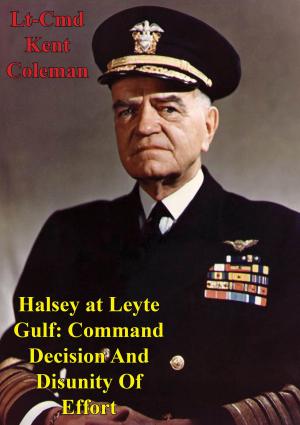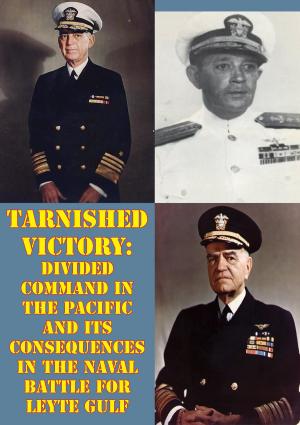The Angels
A History of the 11th Airborne Division 1943-1946
Nonfiction, History, Germany, European General, Military, United States| Author: | Major Edward M. Flanagan Jr. | ISBN: | 9781787203693 |
| Publisher: | Verdun Press | Publication: | January 23, 2017 |
| Imprint: | Verdun Press | Language: | English |
| Author: | Major Edward M. Flanagan Jr. |
| ISBN: | 9781787203693 |
| Publisher: | Verdun Press |
| Publication: | January 23, 2017 |
| Imprint: | Verdun Press |
| Language: | English |
This is the definitive account of the history of the U.S. Army’s 11th Airborne Division (The Angels) from 1943-1946, by then-Major Edward M. Flanagan, Jr. who served with that division in the Pacific War.
“The Division was activated at Camp Mackall, N. Carolina on Feb. 25, 1943, and was composed of former glider and veteran Airborne troops. Upon activation, the Division began intensive training to get the glider troops jump-qualified, and the Division was ready to move overseas in early 1944. Sent first to New Guinea for training in jungle combat, the Division took part in the Leyte landings in the Philippines in Nov. 1944. Moving inland, the unit relieved the battle-weary 24th and 37th Inf. Divs. with the mission to clear a mountain pass from Burauen to Ormoc. It took 3 months of bitter fighting, often hand-to-hand, to drive the Japanese defenders from the pass and surrounding heights.
In late January, 1945, the 11th went back into action after a short rest, landing at Nasgubu Beach, Luzon, 70 miles from Manila. Their objective was to remove enemy opposition from a major highway and link with Allied forces attacking Manila. After capturing Fort McKinley and Nichols field, the 11th launched their assault on Manila joining the 1st Cav. Div. and the 37th Inf. Div. who were attacking from the North. Once the capitol was secured, the 11th made a daring raid behind enemy lines and freed more than 2,100 Allied civilian and military POWs from the Los Baños Internment Camp, considered one of the most successful rescues in military history. Following the Los Baños raid, the 11th Airborne spent the next few weeks mopping up resistance in southern Luzon.
In May, 1945, the Division began preparations for the expected invasion of Japan, but with Japan's surrender in August, the Division instead moved to Okinawa to escort Gen. Douglas MacArthur into Japan. The 11th Airborne remained in Japan until 1949 before returning to the U.S.”-print ed.
This is the definitive account of the history of the U.S. Army’s 11th Airborne Division (The Angels) from 1943-1946, by then-Major Edward M. Flanagan, Jr. who served with that division in the Pacific War.
“The Division was activated at Camp Mackall, N. Carolina on Feb. 25, 1943, and was composed of former glider and veteran Airborne troops. Upon activation, the Division began intensive training to get the glider troops jump-qualified, and the Division was ready to move overseas in early 1944. Sent first to New Guinea for training in jungle combat, the Division took part in the Leyte landings in the Philippines in Nov. 1944. Moving inland, the unit relieved the battle-weary 24th and 37th Inf. Divs. with the mission to clear a mountain pass from Burauen to Ormoc. It took 3 months of bitter fighting, often hand-to-hand, to drive the Japanese defenders from the pass and surrounding heights.
In late January, 1945, the 11th went back into action after a short rest, landing at Nasgubu Beach, Luzon, 70 miles from Manila. Their objective was to remove enemy opposition from a major highway and link with Allied forces attacking Manila. After capturing Fort McKinley and Nichols field, the 11th launched their assault on Manila joining the 1st Cav. Div. and the 37th Inf. Div. who were attacking from the North. Once the capitol was secured, the 11th made a daring raid behind enemy lines and freed more than 2,100 Allied civilian and military POWs from the Los Baños Internment Camp, considered one of the most successful rescues in military history. Following the Los Baños raid, the 11th Airborne spent the next few weeks mopping up resistance in southern Luzon.
In May, 1945, the Division began preparations for the expected invasion of Japan, but with Japan's surrender in August, the Division instead moved to Okinawa to escort Gen. Douglas MacArthur into Japan. The 11th Airborne remained in Japan until 1949 before returning to the U.S.”-print ed.








![Cover of the book THE NEW ZEALANDERS IN SINAI AND PALESTINE [Illustrated Edition] by Major Edward M. Flanagan Jr.](https://www.kuoky.com/images/2014/june/300x300/9781782892441-FJuE_300x.jpg)
![Cover of the book TORPEDO 8 — The Story Of Swede Larsen’s Bomber Squadron [Illustrated Edition] by Major Edward M. Flanagan Jr.](https://www.kuoky.com/images/2015/november/300x300/9781786251855-SG1X_300x.jpg)


![Cover of the book Admiral Halsey’s Story [Illustrated Edition] by Major Edward M. Flanagan Jr.](https://www.kuoky.com/images/2014/august/300x300/9781782892953-aGsz_300x.jpg)

![Cover of the book The Red Knight Of Germany - The Story Of Baron Von Richthofen, Germany’s Great War Bird [Illustrated Edition] by Major Edward M. Flanagan Jr.](https://www.kuoky.com/images/2014/june/300x300/9781782891871-O9ox_300x.jpg)
